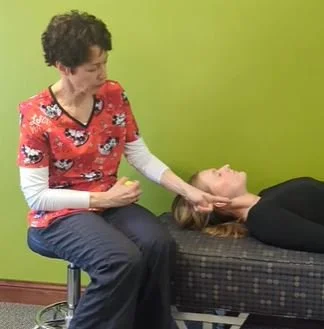In this discussion I would like to explore an extremely common pain pattern as well as some of the root causes and treatments available.
Many patients will present with pretty intense pain in the inside of the shoulder blade, radiating downward in a "J" pattern that hooks underneath the inferior corner of the shoulder blade. The pain is often an ill-defined deep dull achy sensation that the patient feels starts in the mid back area but is difficult to pinpoint.
When patients manually trace the location and radiation of this type of pain, they're basically describing the path of the dorsal scapular nerve without having ever rather than anatomy book.
The dorsal scapular nerve is a relatively thin but long nerve that is formed by a branch of the spinal nerve exiting around the C5 vertebra it then has a convoluted pathway that has to travel through the metal scaling muscles, underneath the levator scapula muscle, and underneath the rhomboid muscles before tapering off at the bottom of the scapula.
The relatively long and convoluted path of the dorsal scapular nerve makes it particularly vulnerable to single or multiple areas of compression with the resulting pain described by the patient above. Possible areas of entrapment include: at the level of the spine itself around C5, especially common from reverse cervical curves and whiplash type injuries, in the scalenes, underneath the levator scapula which is a muscle chronically activated by anterior cervical posture, and within the rhomboid muscles, which are also very chronically partially overloaded muscles.
If the source of the entrapment and compression to the dorsal scapular nerve happens to be within the rhomboids, the patient will usually have some degree of luck resolving the issue with local intervention. However some of the patients we see with the most persistent pain pattern of dorsal scapular neuralgia happened to be those patients with entrapment higher up, usually within the mid cervical spine and the scalenes, as the pain can be felt only in the thoracic spine and not alert the patient or the provider to look higher up the nerve source for resolution. The source of the dorsal scapular neuralgia can usually be assessed by manual palpation if carefully applying pinpoint pressure over the area of the C5 nerve root exit, within the middle scalenes, or the levator scapula muscle, and fully reproducing the pain pattern in the thoracic spine. As always, treatment of the problem depends on the location of the problem itself, but for the most part a combination of cervical manual adjustments and specific myofascial nerve entrapment release can usually get the job done.
https://www.youtube.com/watch?v=8cH151cJEaI









